Manta rays can perform acrobatic maneuvers and fast jumps out of the water, but they can only stay out for a few minutes. Since they must breathe through the water, they might suffocate, and their gills can suddenly stop functioning.
In this blog post, I will delve into the fascinating world of manta rays and learn the answers to fascinating questions, such as whether they require water, how long they can survive without water, and what happens when they are out of water.
Prepare to dive into the mysteries of these magnificent creatures as you explore the depths of marine biology.
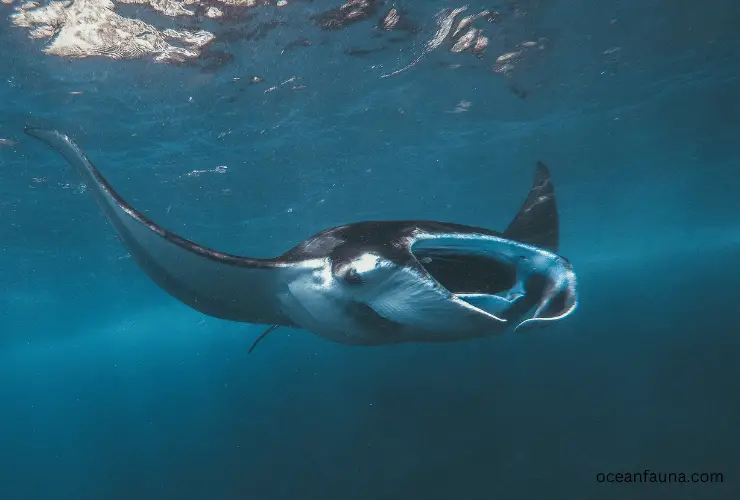
How Long Do Manta Rays Live?
Manta rays are classified into two species that are:
1) Reef Manta Ray (Mobula Alfredi)
2) Giant Manta Ray (Mobula Birostris)
Reef Manta Rays can live up to 50 years in the wild, whereas Giant Manta Rays can live for at least 40 years.
An important thing that should be kept in mind is that this data about how long the two species can live is based on limited data and more research is needed to understand their lifespans thoroughly.
Another important thing that should be noted is that the lifespan of Manta rays can be less than those estimates stated above because they are threatened by fishing, pollution and habitat degradation.
Do Manta Rays Need Water?
Yes, being an aquatic animal, Manta rays need water for multiple purposes like breathing, regulating their body temperature, and getting food.
Manta Rays are filter feeders and consume food in large quantities, their food being planktonic organisms like krill and plankton. They swim with their mouths open to filter these organisms from the water.
Hence, they require a steady water supply to feed and extract the nutrients they require. Furthermore, Manta rays also have gills that extract oxygen from the water, allowing them to breathe.
To remain alive, manta rays require water. They have developed unique physiological and behavioral systems to survive in the water and adapt to live there.
Can Manta Rays Breathe Out of Water?
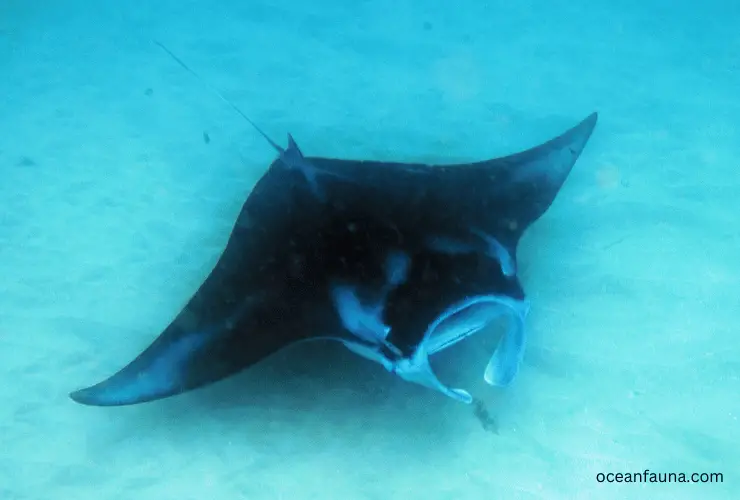
No, water is necessary for manta rays to breathe. Their gills take oxygen from the water to assist them in breathing because they are aquatic species.
Manta rays have enormous, flap-like projections on their heads called cephalic lobes. This will help channel water over their gills and into their mouths, allowing them to take in oxygen and exhale carbon dioxide.
They would suffocate because their gills would dry out from lack of water, making it impossible for them to breathe. Manta rays need to remain in the water to survive, hence.
How Long Can Manta Rays Live Out of Water?
Manta rays cannot survive for long outside of water because they are obligate water breathers, meaning they must breathe in and out of the water to receive oxygen.
They need water constantly flowing over their gills to obtain oxygen. Spending too much time out of the water can lead to asphyxia and death.
Therefore, manta rays must be conserved in their natural underwater home, with no attempt to keep them above water. They can only survive briefly if kept moist, and any prolonged exposure to air can be fatal.
Manta rays are sensitive and easily stressed. So, it’s crucial to remember that handling them outside of water might seriously hurt and distress the animal.
In order to preserve manta rays in their native aquatic habitat and prevent any unwanted injury or disruption to these amazing creatures, it is imperative to respect and protect them.
What Happens to Manta Rays When They Are Out of Water?
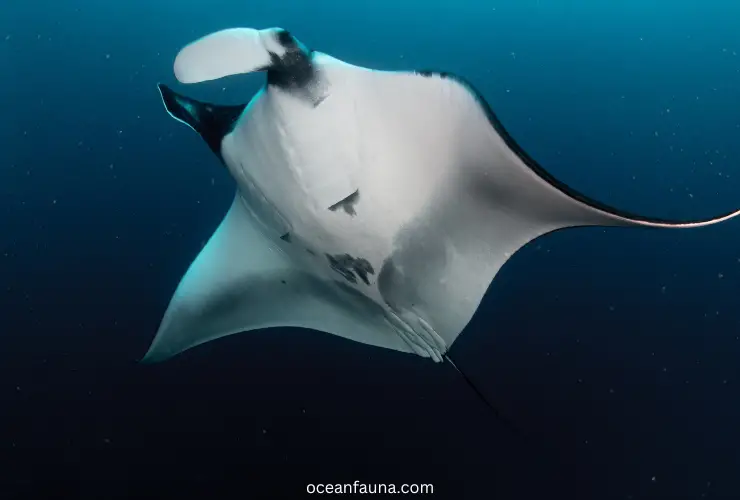
Several things can harm a manta ray’s health and chances of survival when it is out of the water.
The skin and gills of a manta ray begin to dry out when it is out of the water. Thus, they will face dehydration and harm to their respiratory system.
Because it might result in organ failure and death, dehydration can also impact a manta ray’s general health.
The manta ray’s body can also suffer physical harm from being out of the water, especially its fragile fins and tail, which are prone to damage.
Moreover, the manta ray’s body’s weight can exert pressure on its internal organs, harming or traumatizing them.
As a result, it’s essential to protect manta rays from undue injury and to preserve them in their native underwater habitat.
FAQs
Do Manta Rays Come Out of The Water?
Manta rays typically swim close to the water’s surface, although they are occasionally seen above the surface. They leap from the water and can even “fly” through the air by flapping their fins.
Manta rays do not emerge from the water, although they occasionally breach or jump out of the water for various reasons, such as interacting with other manta rays, getting rid of parasites from their skin, or just for pleasure.
The manta ray usually only makes brief breaches, after which it dives back into the water.
They have unintentionally beached themselves on the shore in a few reported instances. However, this is a relatively uncommon event, usually brought on by an illness or accident.
How Deep Do Manta Rays Dive?
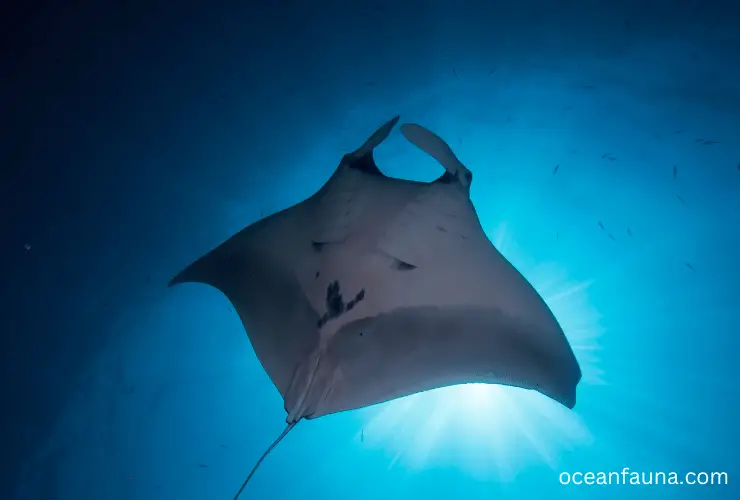
According to current scientific observation, coastal manta rays may dive down to depths of more than 700 feet (214 m) for brief periods of time, although they prefer to stay in shallower areas.
From the surface to 20 to 40 feet below the surface, snorkelers and scuba divers frequently encounter reef manta rays.
If we look at how deep manta rays dive in terms of creating records, the deepest dives recorded in the study were:
- A 2.4m wingspan female reached 624m and
- A 3m wingspan male broke the previous “world record” by almost 200m with a maximum depth of 672 meters.
The very basic reason why manta rays dive down this deep is in search of food.
Conclusion
Manta rays can breathe air at the water’s surface in small amounts, although they do not do it the same way as mammals.
Yet when manta rays break the water’s surface, they can take a mouthful of air, which helps them control their buoyancy and facilitate digestion.
Other ray species exhibit similar behavior. It is thought that this is a strategy used by all ray species to increase their oxygen intake or expel extra gas.
Manta rays can breathe air, but not in the same way as mammals or other creatures living primarily on land.

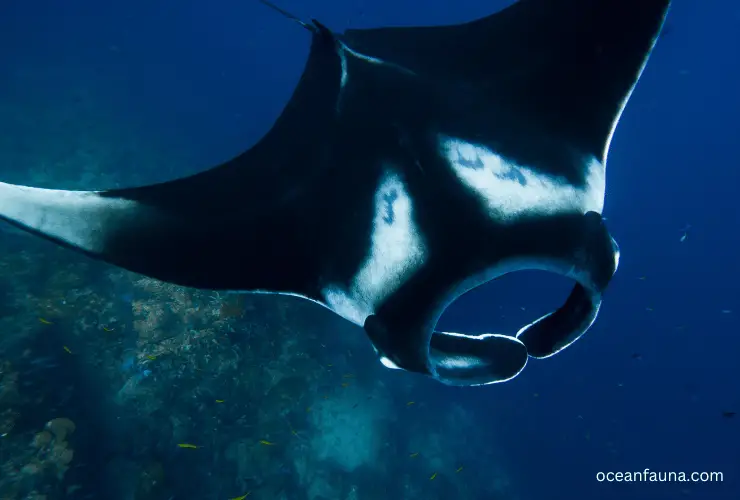
1 thought on “How Long Can Manta Rays Live Out of Water?”